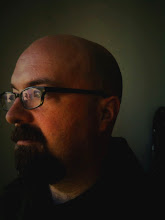A reader commented that in talking about "arrangement," I didn't really define what that means. I'm glad for the comment, because it gave me an opportunity to do some interesting spelunking. Here's a quick primer:
The American Federation of Musicians defines arranging as "the art of preparing and adapting an already written composition for presentation in other than its original form." Sounds like a cover, or a standard, doesn't it? The key word here is preparing: there is deliberate thought and structure put into place, as opposed to the informal act of playing together with each player following their instincts.
As Wikipedia notes, "In general, the larger the ensemble, the greater the need for a formal arrangement." It's common sense; the more people you have playing together, the more need there is for some sort of guidelines and agreement about who will play what when. When you're a musician working out a new tune with your bandmates, often you'll give some general instruction but otherwise they're determining what to play by listening to the other musicians and finding where they fit.
So there is a difference between composing a tune and arranging how an ensemble will play it. I always think of Steve Bartek, who was in Oingo Boingo with Danny Elfman and did many arrangements for his early scores. Danny had the ideas and tunes, but Bartek orchestrated and arranged them for instruments. Listening to this sample from Elfman's score from Pee Wee's Big Adventure, where would you say composition ends and arranging begins?
Wikipedia says that "Jelly Roll Morton is considered the earliest jazz arranger, writing down the parts when he was touring about 1912-1915 so that pick-up bands could play his compositions." Arranging, in my book, is essential to interesting music.
NANCY HARROW, STORYTELLER (Jan. 11, 2026)
22 hours ago

No comments:
Post a Comment